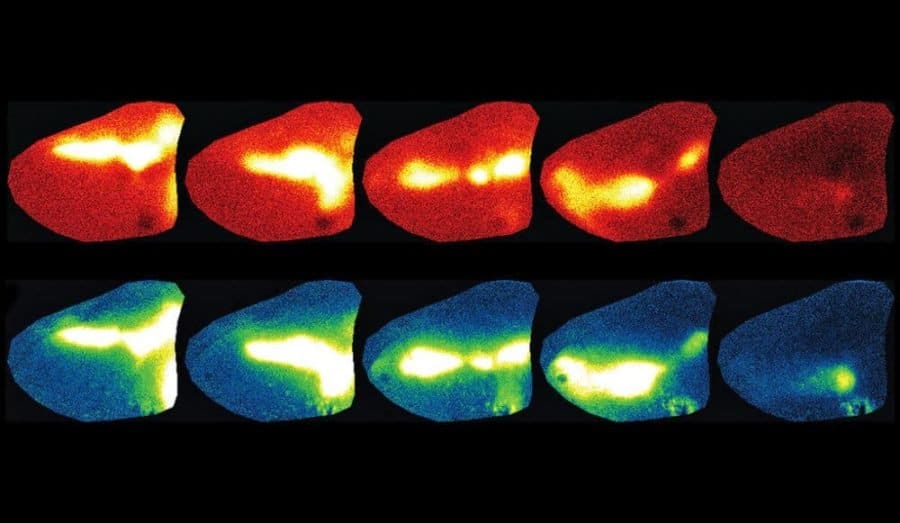The way we see the world around us is the result of a marriage of two neural pathways — one shared by all vertebrates and one that evolved in mammals more recently. It has been a mystery to scientists how these two networks emerge in development to help us form a coherent picture of the world around us. Yale neuroscientists report Sept. 24 in the journal Neuron that the newer neural network involving higher cognitive function exercises its independence during development, whereas its more primitive cousin does not.
All vertebrates possess a primitive network in which the retina sends signals directly to the superior colliculus, an area of the brain that processes visual stimuli. “This is a much more reflexive system,” said Alexandra Gribizis, lead author of the study and graduate student in the lab of Michael Crair, the William Ziegler III Professor of Neuroscience and professor of ophthalmology and visual science.
In the more recently evolved pathway, signals from the retina are received in the thalamus and are relayed to the cortex, the brain’s seat of higher-order thinking. This network allows mammals to identify complex visual features and assess which objects around them are important or to focus attention upon certain features of the environment. In an effort to explore how the networks interact, Gribizis and her colleagues developed a system to track neural input and output simultaneously in both systems during their development in mice, a tool that could help neuroscientists explore many facets of brain activity and development, the authors say.
The system showed that while the primitive network remained consistently active and responsive to the retina throughout development, the visual cortex became less reliant on input from the retina by the second week after birth.
“Activity in the cortex becomes progressively more independent during development from what the retina is telling it to do,” Gribizis said.
In contrast, activity in the primitive neural network remains more closely tied to the retina, which is consistent with its more reflexive role in responding to sensory stimuli.


